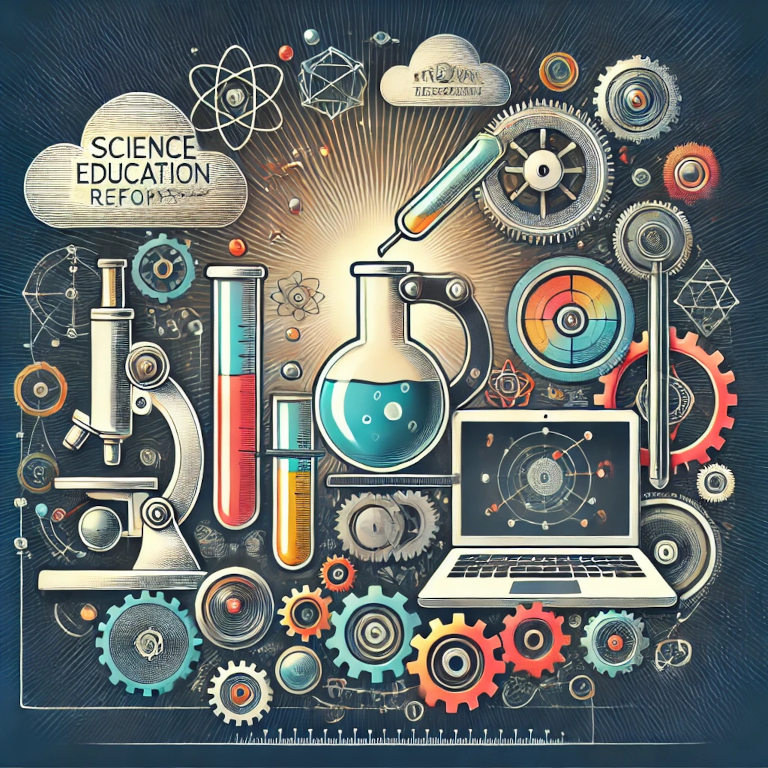Science education reform is a crucial topic in the realm of Science and Education, focusing on improving the way science is taught and learned in schools. Effective science education is essential for fostering critical thinking, problem-solving skills, and a deep understanding of the natural world. As an expert in Science and Education, I will explore the need for science education reform, its key components, and strategies for successful implementation.
The Need for Science Education Reform
The rapidly changing landscape of science and technology necessitates a corresponding evolution in science education. Traditional methods of teaching science often emphasize rote memorization and passive learning, which can hinder students’ ability to apply scientific concepts in real-world contexts. Additionally, the increasing complexity of scientific issues, such as climate change and public health, requires a scientifically literate population capable of making informed decisions.
Preparing for the Future
Modern science education must equip students with the skills and knowledge needed to navigate a future driven by scientific and technological advancements. This includes fostering an understanding of scientific principles, promoting inquiry-based learning, and encouraging the development of critical thinking and problem-solving skills.
Addressing Disparities
Science education reform also aims to address disparities in access to quality science education. Students from underrepresented and underserved communities often face significant barriers to science learning, including lack of resources, insufficiently trained teachers, and limited exposure to scientific careers. Reform efforts seek to create equitable learning opportunities for all students.
Key Components of Science Education Reform
Successful science education reform encompasses several key components designed to enhance the quality and effectiveness of science teaching and learning.
Inquiry-Based Learning
Inquiry-based learning shifts the focus from passive absorption of information to active exploration and investigation. Students engage in hands-on experiments, ask questions, and develop hypotheses, fostering a deeper understanding of scientific concepts. This approach encourages curiosity and critical thinking, making science more engaging and relevant.
Interdisciplinary Approach
Science education reform advocates for an interdisciplinary approach that integrates science with other subjects such as mathematics, technology, and engineering. This STEM (Science, Technology, Engineering, and Mathematics) integration helps students see the connections between different fields and understand the practical applications of scientific knowledge.
Teacher Professional Development
Effective science education reform requires well-trained and knowledgeable teachers. Professional development programs for science educators focus on enhancing their content knowledge, teaching skills, and familiarity with innovative instructional strategies. Ongoing training and support help teachers stay current with scientific advancements and pedagogical best practices.
Use of Technology
Incorporating technology into science education is essential for engaging students and enhancing learning. Digital tools, such as virtual labs, simulations, and educational apps, provide interactive and immersive learning experiences. Technology also facilitates access to up-to-date scientific information and global collaboration opportunities.
Assessment Reform
Traditional assessment methods often fail to capture the depth of students’ understanding and skills. Science education reform calls for the use of diverse assessment strategies, including performance-based assessments, portfolios, and formative assessments. These methods provide a more comprehensive picture of student learning and inform instructional practices.
Strategies for Implementing Science Education Reform
Implementing science education reform requires a coordinated effort among educators, policymakers, and communities. Here are some strategies to support successful reform:
Policy and Advocacy
Effective science education reform begins with supportive policies at the local, state, and national levels. Advocacy efforts should focus on securing funding for science programs, promoting STEM initiatives, and establishing standards that prioritize inquiry-based and interdisciplinary learning.
Community and Industry Partnerships
Collaboration with community organizations, businesses, and scientific institutions can enhance science education. Partnerships provide resources, expertise, and real-world learning opportunities for students. Industry professionals can offer mentorship, internships, and career exploration activities.
Curriculum Development
Reforming science education requires a well-designed curriculum that aligns with modern educational goals. Curriculum development should involve input from educators, scientists, and stakeholders to ensure relevance and rigor. The curriculum should emphasize inquiry, critical thinking, and the integration of technology.
Equity and Inclusion
Equity and inclusion must be at the forefront of science education reform efforts. Strategies include providing resources and support for underserved schools, implementing culturally responsive teaching practices, and creating pathways for underrepresented students to pursue science careers.
Continuous Improvement
Science education reform is an ongoing process that requires regular evaluation and adjustment. Collecting and analyzing data on student outcomes, teacher effectiveness, and program implementation helps identify areas for improvement. Continuous improvement efforts ensure that reform initiatives remain effective and responsive to changing needs.
Summary
Science education reform is essential for preparing students to thrive in a rapidly advancing world. By emphasizing inquiry-based learning, interdisciplinary approaches, teacher professional development, technology integration, and diverse assessment methods, reform efforts aim to create a more effective and equitable science education system. Successful implementation of science education reform requires collaboration among policymakers, educators, communities, and industry partners. Through these efforts, we can inspire a new generation of scientifically literate individuals capable of addressing the complex challenges of the future.






